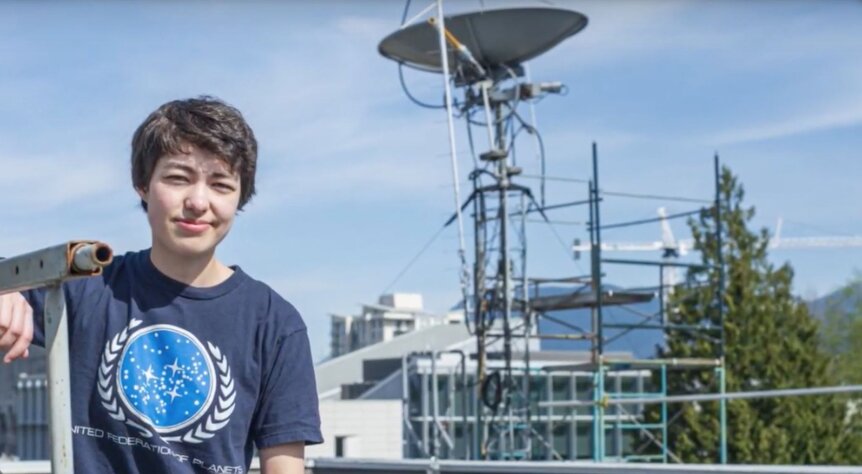Create a free profile to get unlimited access to exclusive videos, sweepstakes, and more!
This eagle-eyed college student just discovered 17 new exoplanets

While most of us go about our daily routine tasks of getting gas, groceries, and deleting junk email, a physics and astronomy PhD candidate at the University of British Columbia named Michelle Kunimoto was quietly poring over data collected by NASA's Kepler Space Telescope, and happened upon 17 new planets — including a potential Earth-like exoplanet spinning in the sweet spot beside its local star.
Published last week in The Astronomical Journal, Kunimoto's exciting discoveries include the Habitable Zone world officially named KIC-7340288 b, a planet 1.5 times times the size of Earth, which is compact enough to contain rocky, water-carrying terrain rather than the turbulent atmospheres of our solar system's bloated gas giants. This encouraging planet has a year spanning 142 days and orbits its host star from approximately half the distance between Earth and the sun at 0.444 Astronomical Units.
“This planet is about a thousand light years away, so we’re not getting there anytime soon!” Kunimoto told her school in an interview. “But this is a really exciting find, since there have only been 15 small, confirmed planets in the Habitable Zone found in Kepler data so far.”
Kepler's initial four-year mission, launched back in 2009 to search for remote planets that could hopefully support life, resulted in the probe detecting more than 2,600 planets outside our own cosmic neighborhood. In 2018, NASA cut funding to the intrepid spacecraft and retired Kepler following nine years of collecting precious info on our complex universe.
Regarding the rest of the 16 new planets that Kunimoto found, the most diminutive is two-thirds the size of Earth, and the remaining batch show a range of up to eight times the girth of our Big Blue Marble. Below, KIC-7340288 b is depicted in green alongside the other discoveries, with Earth and Neptune included for comparison.
While diligently working toward her PhD, Kuimoto employed a technique known as the “transit method” to hunt for Goldilocks planets amid the glittering clutter of 200,000 stars witnessed by Kepler's decade-long mission. For backup, Kunimoto teamed up with UBC alumnus Henry Ngo to obtain crystal-clear images of some of her rare, planet-protecting stars with the Near InfraRed Imager and Spectrometer (NIRI) on Hawaii's Gemini North 8-metre Telescope.
“Every time a planet passes in front of a star, it blocks a portion of that star’s light and causes a temporary decrease in the star’s brightness,” Kunimoto said. “By finding these dips, known as transits, you can start to piece together information about the planet, such as its size and how long it takes to orbit.
“I took images of the stars as if from space, using adaptive optics,” she added. “I was able to tell if there was a star nearby that could have affected Kepler’s measurements, such as being the cause of the dip itself.”
Here's hoping Kunimoto gets an A for her efforts.
















